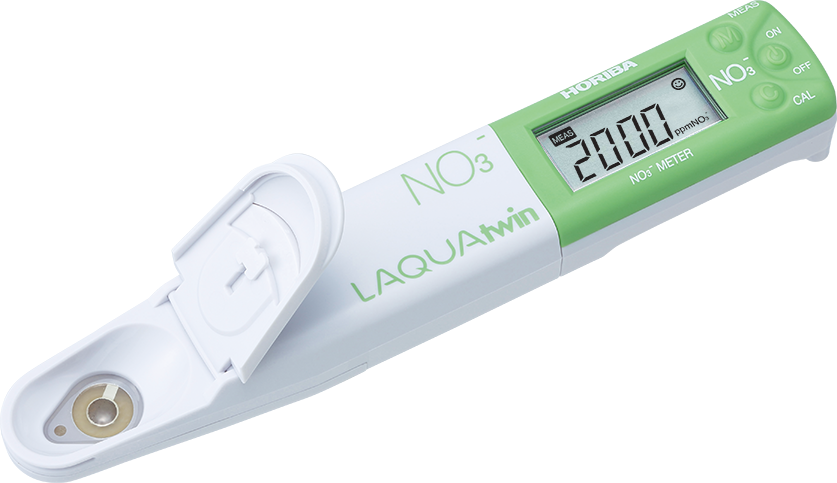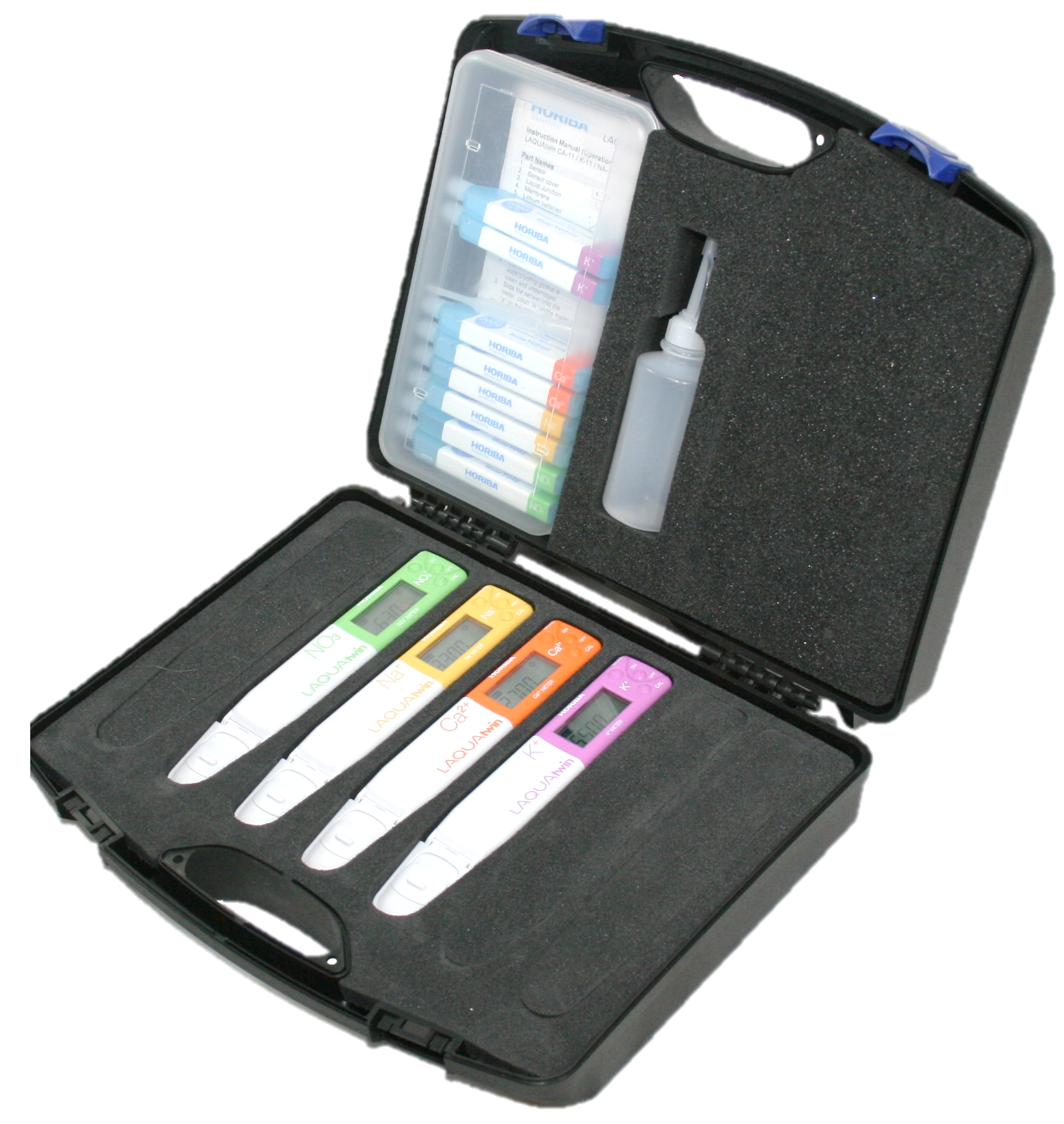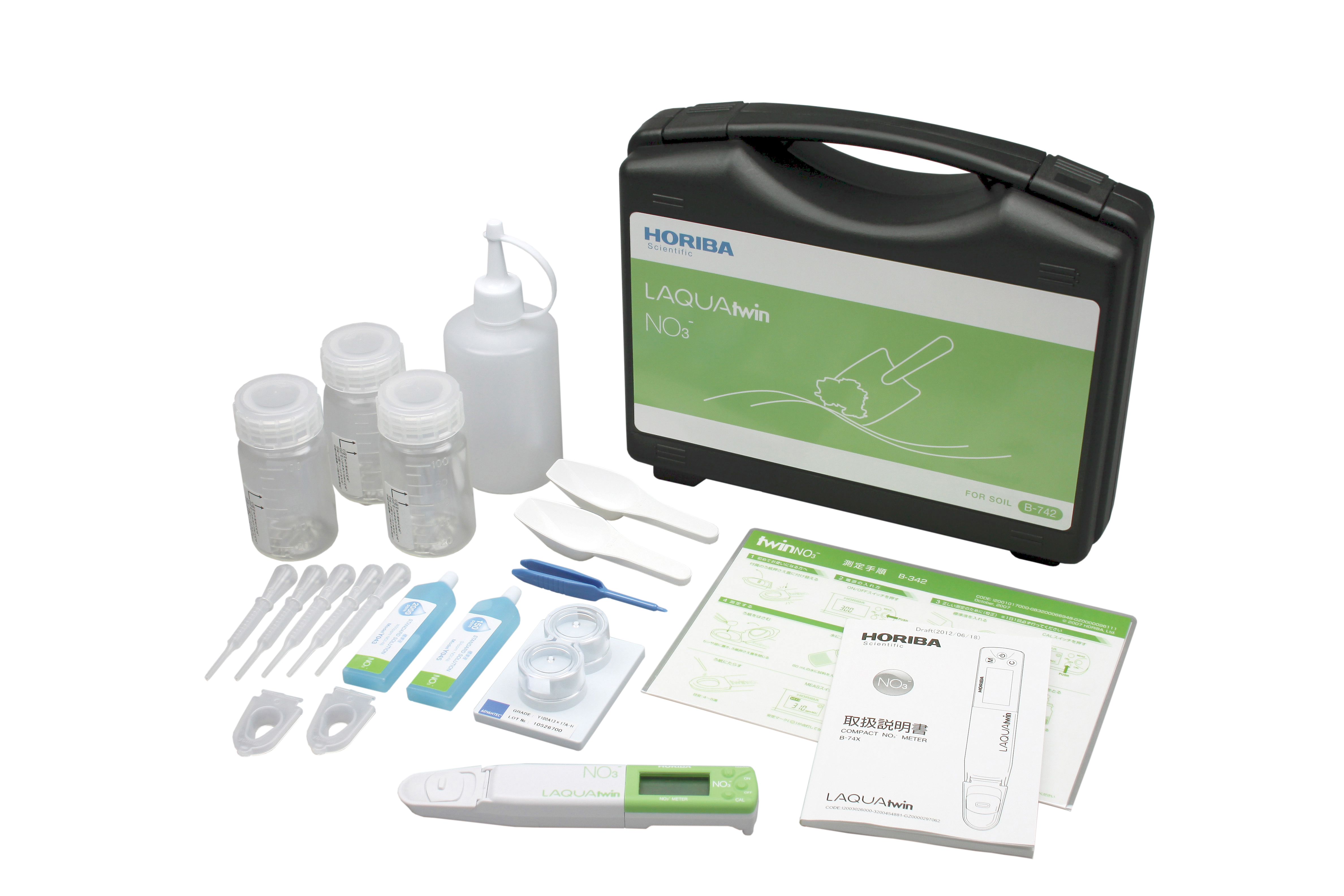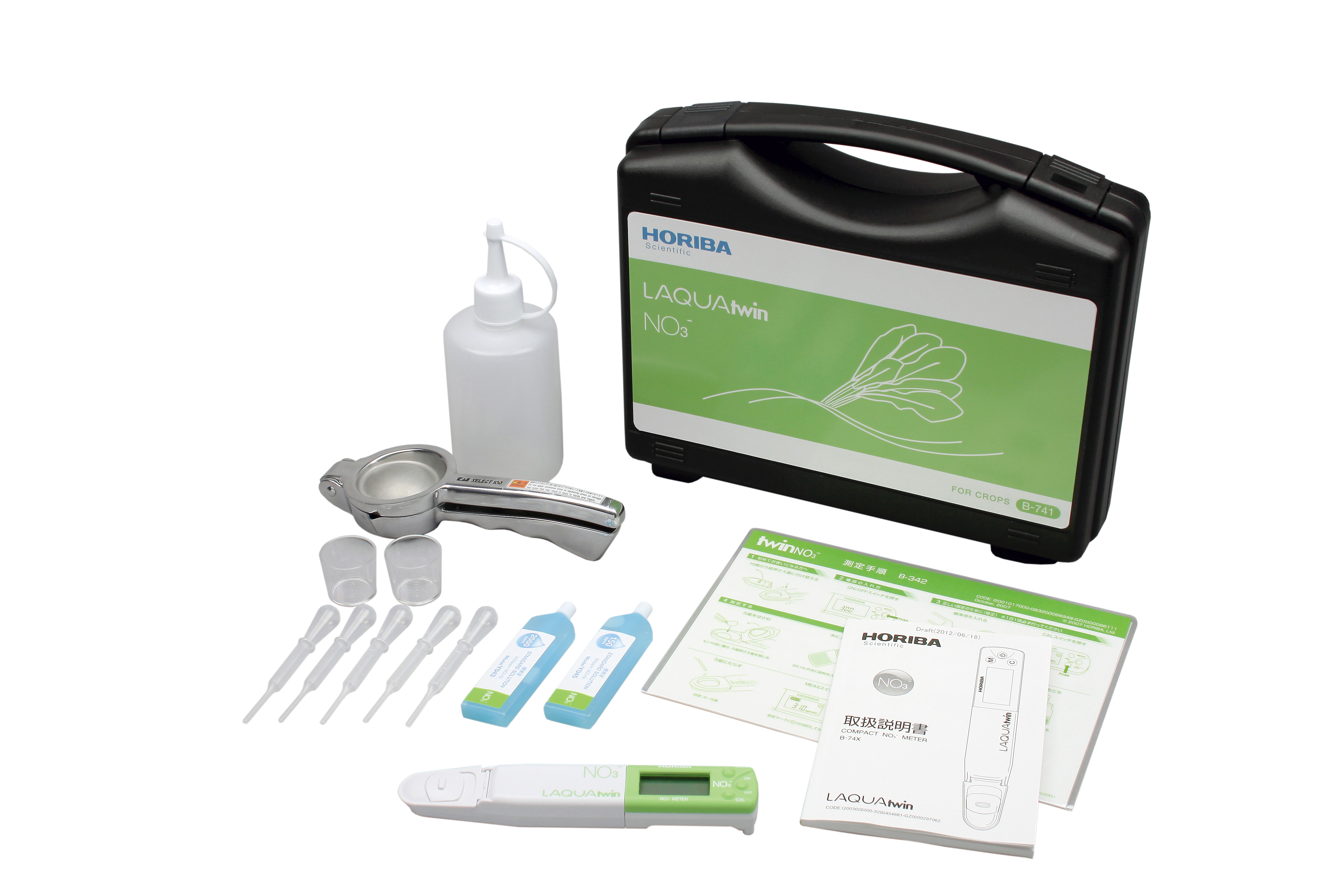Nitrate Measurement in Hybrid Sudangrass and Pearl Millet Hays
Determining the nitrate concentrations of sudangrass and pearl millet before feeding them to livestock prevents nitrate toxicity. Plant sap testing with LAQUAtwin B-743 nitrate ion meter offers fast and accurate nitrate in-field analysis. Generally, the maximum nitrate concentrations considered safe for all cattle are 820 ppm and 700 ppm for sudangrass sap and pearl millet sap, respectively.
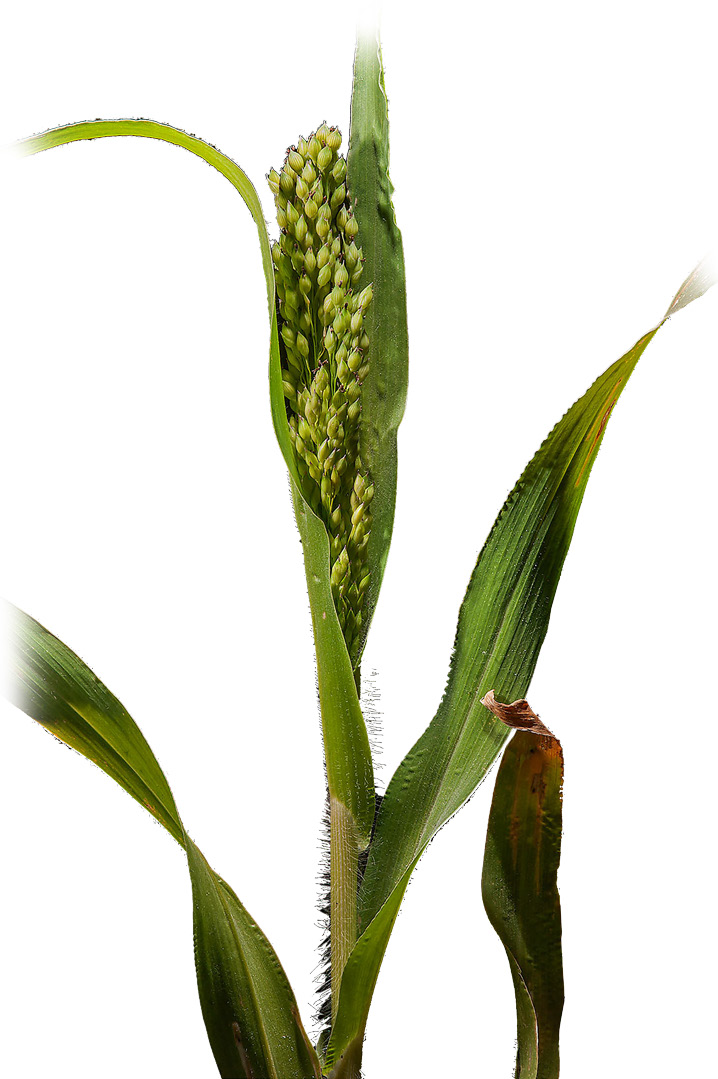
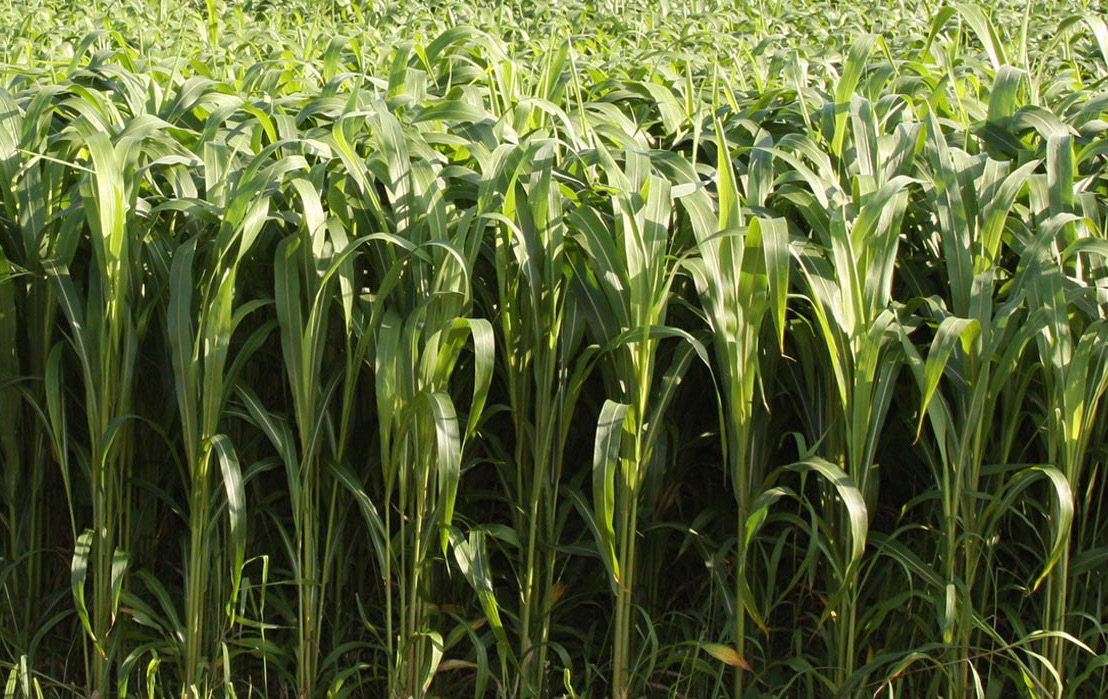
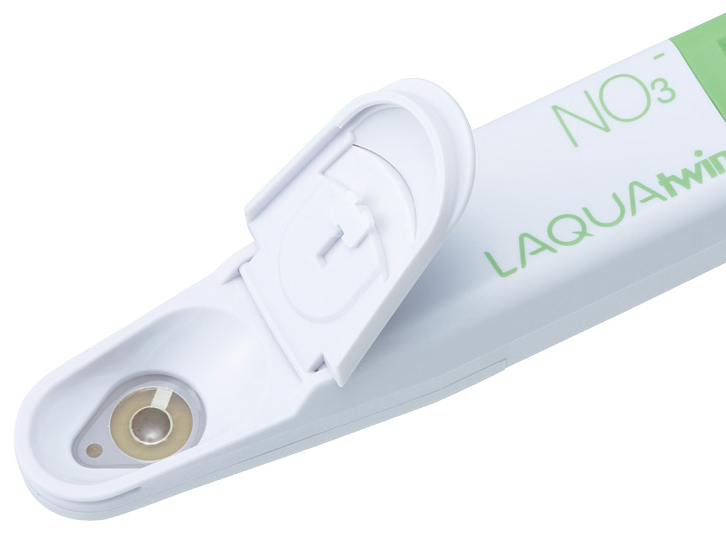
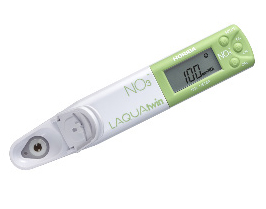
Introduction
Hybrid Sudangrass and pearl millet have high potential for accumulating nitrate. Pearl millet has been noted to accumulate significantly higher quantities of nitrate than does sudangrass. These high nitrate plants, either standing in the field or fed as hay, can cause abortion in pregnant cattle or death if consumed in great quantities. Factors that contribute to nitrate accumulation in plants are excessive use of nitrogen fertilizers and stressful environmental conditions that restrict plant growth such as drought, reduced sunlight, low growing temperatures and acidic or phosphorus-deficient soil.
The LAQUAtwin B-743 nitrate ion meter provides the easiest way to measure nitrate concentration in fresh plant sap. The sensor requires only few drops of sap, which can be quickly extracted using a garlic press. The meter analyses the sap in just few seconds and displays reading expressed as either nitrate (NO3-) or nitrate-nitrogen (NO3-N) ppm. Nitrate results can be obtained immediately in the field with much less effort and relatively low cost. These advantages are useful for farmers and ranchers who are managing livestock and forage crops.
Method
Calibrate the LAQUAtwin B-743 nitrate ion meter according to manufacturer’s instructions using the 150ppm and 2000ppm nitrate ion standards included in the kit. Make sure that the unit of measurement set in the meter is nitrate (NO3-) ppm.
Sample Collection and Measurement
-
Select five plants randomly from each sample and cut them with a pruner at a similar height to that of harvest.
-
Cut the plant samples into 6-inch long pieces. Then, cut again to shorter 1/3-inch pieces.
-
Mix the pieces thoroughly into a small pile.
-
Transfer a portion of the 1/3-inch pieces consisting of leaves and stems to a garlic press.
-
Squeeze the garlic press and collect the sap into a container.
-
Place drops of sap onto the nitrate ion sensor using a dropper. See Notes.
-
Record the nitrate reading once it is stable.
-
Rinse the sensor with deionized or distilled water and blot dry before testing another sample.
-
Re-check the reading of a standard after testing 10 samples.
Notes:
a. If very small amount of sap is extracted from the plant sample (i.e., sap volume is not enough to cover the flat sensor), use sampling sheet in calibration as well as in sample measurement. To do this, place a sampling sheet onto the sensor and then place drops of standard solution or sap to saturate the sampling sheet.
b. Another way to saturate the sampling sheet with sap is to place it over the holes of garlic press before loading plant sample and squeezing the press. Transfer the sap-saturated sampling sheet onto the sensor using a tweezer.
c. Allot one sampling sheet for each standard solution type and sap sample and discard all used sheets after testing.
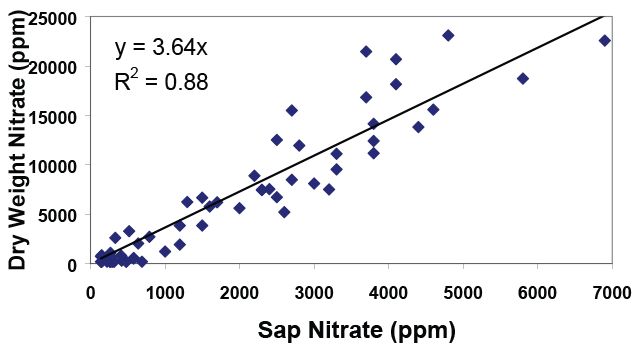
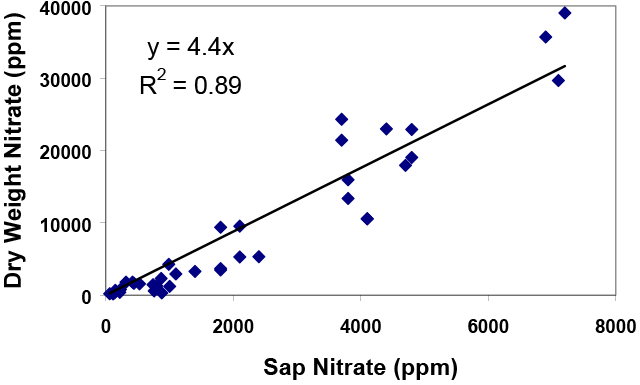
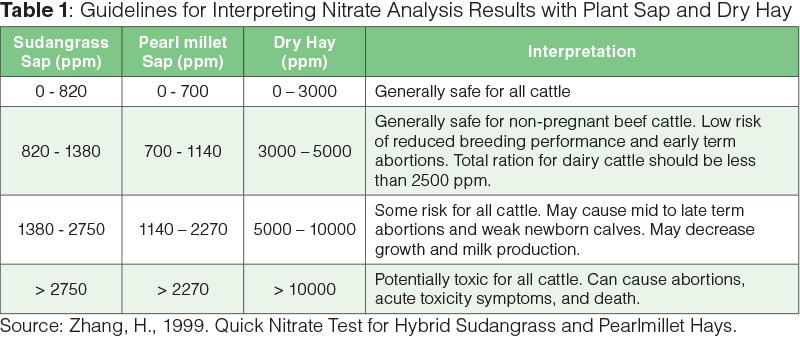
Results and Benefits
To interpret the LAQUAtwin B-743 nitrate ion meter results with sudangrass and pearl millet plants, refer to the established guidelines in Table 1.
The sap nitrate results measured with LAQUAtwin B-743 nitrate ion meter are highly correlated with those dry-weight based nitrate results obtained from conventional laboratory procedures. As shown on Figures 1 and 2, the correlation coefficients for hybrid sudangrass and pearl millet are 0.88 and 0.89, respectively. To convert the sap nitrate concentration to dry-weight based concentration, use the following equations:
Hybrid Sudangrass:
Nitrate(Dry Weight) = 3.64 x Nitrate(Sap)
Pearl millet:
Nitrate(Dry Weight) = 4.4 x Nitrate(Sap)
References And Suggested Readings
- Zhang, H., 1999. Quick Nitrate Test for Hybrid Sudangrass and Pearlmillet Hays. Oklahoma Cooperative Extension Service [online]. Available from: http://www.specmeters.com/assets/1/7/nitrate_sorghum3.pdf [Accessed on 18 October 2016].
- Selk, G., Step, DL., Strickland, G., Zhang, H., 1999. Nitrate Toxicity in Livestock. Oklahoma Cooperative Extension Service [online]. Available from: http://extension.oregonstate.edu/douglas/sites/default/files/documents/lf/faqf/pss2903.pdf [Accessed on 18 October 2016].
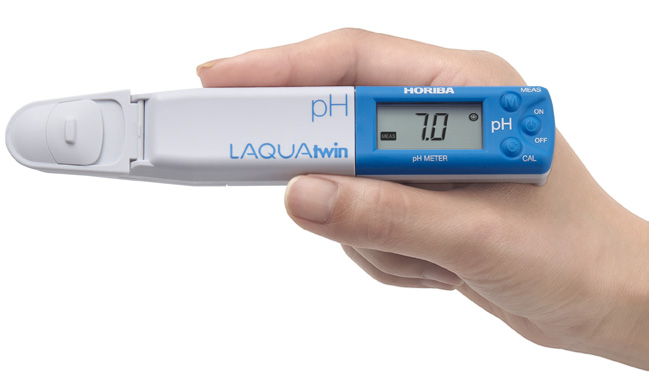
LAQUAtwin: the only meters with flat sensor technology.
HORIBA’s highly-sensitive, flat sensor technology opens up new possibilities for sampling and sample types. Only a small amount of sample is required, so you can easily sample in situ without the need for beakers or other labware. Sensors are easily replaced as required.
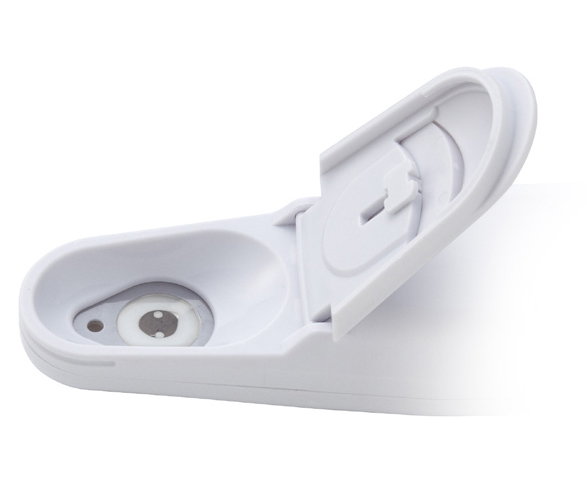
Calibrate and measure at the touch of a button — the smiley face will tell you when the result can be read.
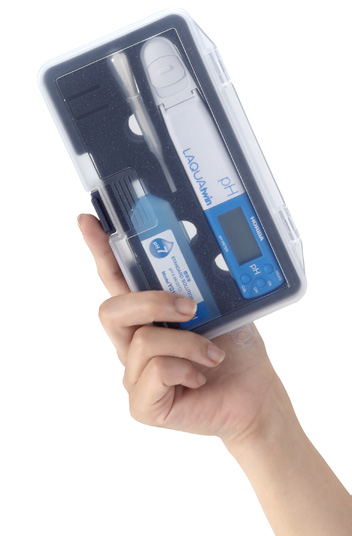
LAQUAtwin is fully waterproof and dustproof.
The meter and sensor are fully waterproof* and dustproof, so you can take it anywhere.
* IP67 rated. Will withstand immersion for 30 minutes at 1 m. Not suitable for underwater use.
Carry case comes as standard for handy portability.
The compact carry case contains everything you need for your measurements, including the standard solution and sampling sheets.

